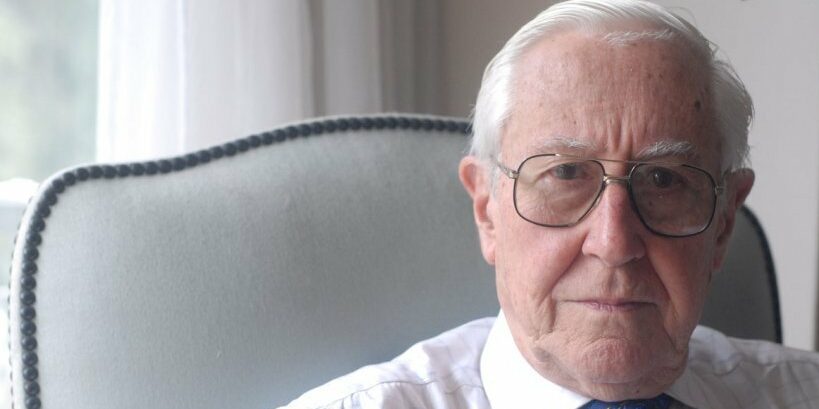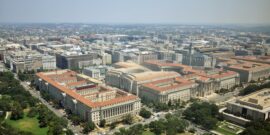Does the New Right have the elite it needs?
Latin America’s True Friend of Liberty
Classical liberals live a lonely political existence at the best of times. Some climates, however, are less hospitable than others.
Contemporary Latin America fits squarely into the less-than-friendly category. Certainly, there were long periods in the nineteenth century in which liberal ideas exercised considerable influence throughout the region after the end of colonial rule. By the 1890s, however, politics south of the Rio Grande were moving in decidedly illiberal directions. Over the next 100 years, populisms of left and right, reactionary caudillos, socialist movements, Marxist dictators, and indigenous ideologies flooded the Latin American world.
Complicating matters is the sense that classical liberalism is somehow a foreign import into Latin America. Every time I have been in the region, it has been impressed upon me by people from left, center, and right—and even some classical liberals—that there is something about classical liberal ideas that render them discordant with major historical and cultural features of Latin America.
There are, however, twentieth-century examples of classical liberals who did shape ideas and policies throughout Latin America. The most well-known is the market-liberal Chicago Boys who liberalized the Chilean economy in the 1970s and 1980s. But other figures deserve more attention, not least because they illustrate how classical liberals can exert lasting influence in adverse conditions.
One such individual is the subject of a new book authored by the Uruguayan economist, journalist, and president of the Centro de Estudios para el Desarrollo (CED), Hernán Bonilla. In Ramón Díaz: Una biografía intelectual, Bonilla provides readers with a comprehensive study of a Latin American classical liberal who, despite tremendous obstacles, helped shift the world of ideas and policy debate in his own country and throughout the region more generally in freedom-friendly directions.
A Force of Nature
In the opening pages, Bonilla describes Ramón Díaz (1926–2017) as a force of nature. At various parts of his life, Díaz worked as a lawyer, journalist, economist, and university professor. He also held senior positions in the Uruguayan government. Between 1968 and 1969, he served as Under-Secretary of the Ministry of Industry and Commerce, before spending 1970 as Director of the Office of Planning and Budget. Twenty years later, Díaz was appointed President of Uruguay’s Central Bank.
The consistent intellectual thread which bound all this activity together was Díaz’s commitment to classical liberal thought in a society largely hostile to such ideas. Like many Latin American countries, Uruguay started embracing dirigiste policies in the nineteenth century’s last decades. Successive governments established export-import controls, government monopolies over entire economic sectors, price controls on particular goods, corporatist economic structures, import-substitution policies, and expanded the public sector.
Some such policies reflected the influence of prominent apostles of state-directed economic development like the Argentine economist Raúl Prebisch. Eventually, all the usual problems associated with these policies—structural rigidities in the economy, clientelism and cronyism, declining living standards, inflation, steadily increasing unemployment, diminished competition, etc.—manifested themselves in Uruguay and culminated in serious stagflation.
Many consequently found themselves looking for solutions elsewhere. Some Uruguayans turned to the Marxist-influenced Tupamaro movement. Initially made up of trade unionists and students, it quickly took a violent turn and eventually engaged in urban-guerrilla warfare. This provoked a crackdown by the armed forces which helped open the door to military dictatorship between 1973 and 1985.
Díaz chose a different direction. By the 1960s, Bonilla notes, liberal influences had been ostracized from Uruguayan politics. Yet through his own reading and as a consequence of attending a Mont Pelerin Society meeting in 1967, Díaz began immersing himself in classical liberal literature. This reflected Díaz’s natural intellectual curiosity. But, Bonilla stresses, it was also a consequence of Díaz’s experience of government service where he witnessed the disastrous effects of price and wage freezes and the apparent inability of governments to subdue galloping inflation and unemployment.
Díaz became convinced that the basic problem in the Uruguayan economy and society more widely was the steady diminution of freedom and the associated undermining of rule of law. In books like F. A. Hayek’s The Constitution of Liberty and the writings of Adam Smith and the wider Scottish Enlightenment tradition, Díaz found confirmation of this essential insight. This took Díaz down paths very different from those Latin Americans who looked to Marxist liberationist movements or military juntas for salvation.
Recovering a Tradition
Choosing his own way was somewhat of a motif in Díaz’s life. This included breaking with some of his own family’s traditions. Díaz came from a prominent political family, with both his father and uncle being heavily involved in Uruguayan politics. They were also militant anti-clericals. From 1900 onwards, Bonilla notes, Uruguay went through a process of radical secularization that went far beyond a healthy separation of church and state and introduced a deep polarization into society. Díaz’s father and uncle were suspicious of the Church and, more particularly, priests.
This background did not, however, inhibit Díaz from converting to Catholicism in his mid-30s and practicing his faith for the rest of his life. For him, Catholicism was spiritually compelling and intellectually convincing. Yet Díaz’s religious conversion did not lead him to embrace the corporatist and economic nationalist views held by many conservative Latin American Catholics. Instead, he focused attention on the relationship between classical liberalism and Christianity.
Here the writings of figures like Lord Acton and Alexis de Tocqueville became significant touchstones for Díaz’s thought. Like Hayek, Díaz was interested in overcoming the tensions between Christianity and classical liberalism. Natural law philosophy was one ground on which Díaz indicated a reconciliation might be realized, insofar as natural law, which remains so central to Christian philosophical reflection, lends itself to strong defenses of things like limited government and rule of law that classical liberals claim to take seriously.
Díaz’s example of how to live as a free man in conditions where the temptation to acquiesce in hard or soft forms of despotism is overwhelming.
Alongside these personal journeys, belief in the importance of ideas led Díaz to establish a magazine, Búsqueda, the first edition of which appeared in January 1972. Supported by a group of liberal lawyers, economists, and businessmen, Búsqueda’s purpose was to provide a forum for discussing liberal ideas. As the magazine’s director, Bonilla points out, Díaz avoided dogmatic stances on the differences between the various schools of classical liberalism. The editorial of the magazine’s first issue, authored by Díaz, cited Lord Acton’s dictum about nothing being more disputed than the true nature of freedom.
Over the following decades, Díaz became a prolific writer, penning editorials and articles in Búsqueda as well as major newspapers like El Observador on topics as varied as philosophy, history, and political economy. He also wrote systematic rebuttals of the dirigiste policies associated with Raúl Prebisch, and authored books addressing subjects ranging from ethics and economics to the problem of legalized monopolies.
One effect of this intellectual activity was to grow steadily the space for ideas that, Bonilla argues, eventually created opportunities for liberals to shape Uruguay’s political and economic future. By the 1980s and 1990s, this had led to the emergence of groups and institutions well-positioned to move Uruguay towards greater political and economic liberalization.
Díaz’s immediate objective wasn’t, however, the shaping of policy, as important as this was to him. In successive chapters, Bonilla illustrates that what really interested Díaz was deepening people’s understanding of the grand Western tradition of liberty as something that stretches back to Athens, Rome, and Jerusalem.
What also becomes clear is Díaz’s attachment to the Anglosphere’s particular contribution to that tradition and the role played by figures like Smith and Edmund Burke in shaping it. In some respects, this was a manifestation of Díaz’s long-standing Anglophilia. But, Bonilla demonstrates, it also underscores Díaz’s attachment to what might be called the conservative wing of classical liberalism.
In this regard, Hayek was an important reference point for Díaz. He freely conceded Hayek’s criticisms of conservatism, famously expressed in Hayek’s 1957 Mont Pelerin Society address, “Why I Am Not A Conservative.” In several essays, however, Díaz stressed that the maintenance of liberty relied upon the existence of antecedent traditions that helped guide people’s exercise of their freedom in wise rather than destructive ways. It was a point that Hayek himself came to emphasize in the 1970s and 1980s—so much so that Hayek described himself as “becoming a Burkean Whig.”
Two years after Hayek’s death in 1992, Díaz presented a paper at a Mont Pelerin Society meeting entitled “As a Philosopher of the Extended Order: Why Hayek was a Conservative.” Noting the risks associated with giving Hayek a label that Hayek himself rejected, Díaz pointed to Hayek’s observation that the stable development of a civilization of liberty relied upon widespread adherence to long-standing traditions that embodied the insights of previous generations that no one generation could possibly discover by itself. The saliency of these traditions in conveying valuable knowledge is often not grasped by most people until the traditions are usurped by those imposing a new order from the top down. Here, Díaz suggests, there was a clear parallel between Hayek and Burke, the latter being described by Díaz (using Acton’s words) as “the first of the liberals” who became “the first of the conservatives.”
A Free Man
In the context of 1970s Latin America, anyone seeking to elevate the importance of liberty and its associated institutional supports was likely to attract negative attention from the left and right. This had very direct consequences for Díaz.
Díaz firmly opposed the Marxist Tupamaro urban-guerillas and was critical of liberation theology. He also supported several reforms introduced by the military regime which ruled Uruguay between 1973 and 1985. This, however, didn’t inhibit the regime from abruptly imprisoning Díaz twice during the dictatorship.
On both occasions, senior regime officials took exception to articles published in Búsqueda criticizing specific government policies. In the second instance, it was several days before Díaz’s family discovered where he was being held and secured his release. Though Díaz was unharmed, this was a time when the regime didn’t hesitate to torture political prisoners. Bonilla shows that the prospect of that did not deter Díaz from continuing to speak his mind.
Uruguay’s return to democracy in 1985 coincided with the resurgence of classical liberal ideas to the forefront of economic debate throughout the world. Bonilla makes it clear that much of the willingness of Uruguayans to open the economy to the world and dismantle many dirigiste structures owed a great deal to Díaz. His writings helped establish a firm foundation for classical liberal ideas to flourish and eventually be drawn upon by political leaders pursuing change.
During this period, Díaz served for four years as President of Uruguay’s Central Bank. He was confronted with the unenviable task of tackling Uruguay’s out-of-control inflation. Within four years, he reduced inflation from 130 percent to 53 percent by implementing a successful stabilization plan. This involved devaluing the currency, floating the exchange rate, and pressuring the government to get its fiscal deficits under control. As a result, inflation continued to fall. By 1999, it was only 4.2 percent. In the midst of all this, Díaz somehow found time to modernize the Central Bank’s operations and significantly enhance its intellectual capital, thereby making it a thoroughly professional institution.
But neither government service nor his ongoing teaching work as a university professor distracted Díaz from making the intellectual case for liberal ideas to his compatriots and wider audiences. He wrote, for example, an economic history of Uruguay. Díaz also found himself in demand throughout Latin America as a long-standing representative of liberal ideas. His renown was such that Díaz became the first South American to serve as President of the Mont Pelerin Society.
As Bonilla writes in his concluding chapter, Ramón Díaz rescued liberal ideas from the obscurity into which they had fallen in Uruguay. In the process of doing so, he formed many younger minds in classical liberal thought, forced his dirigiste opponents to defend their positions for the first time in decades, and created opportunities for liberal ideas to shape his nation’s intellectual and policy landscape. In this regard, Bonilla highlights widespread awareness of the importance of commercial openness, a broad commitment to orthodox macroeconomic policies, and attention to sound judicial systems as critical parts of Díaz’s legacy.
These are no small achievements. More important, however, was Díaz’s example of how to live as a free man in conditions where the temptation to acquiesce in hard or soft forms of despotism is overwhelming. Sometimes that is the very essence of being a true friend of liberty.



